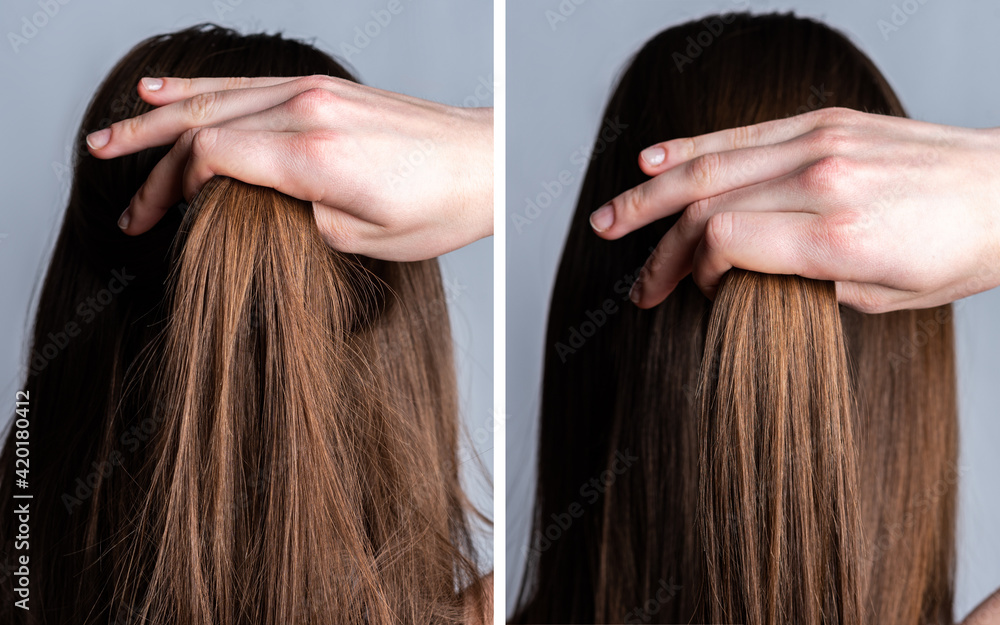When considering the impact of hair straightening on the overall health and longevity of your tresses, the question often arises: do I immediately kill my hair after straightening it? To answer this pressing inquiry, it is vital to delve deeper into the intricacies of hair structure, heat application, and the techniques employed in straightening. Understanding these factors can foster a more nuanced perspective, ultimately leading to healthier styling choices.
To start, let’s grasp the anatomy of hair. Composed predominantly of a protein called keratin, hair exhibits a unique structure that includes the cuticle, cortex, and, in some cases, medulla. The cuticle serves as a protective layer, while the cortex, comprising the majority of the hair’s mass, contains melanin and contributes to hair’s strength and texture. Understanding this fundamental biology is the first step in comprehending how heat manipulates these structures.
Hair is remarkably resilient, but it does not withstand high temperatures unscathed. Straightening tools, such as flat irons, often reach temperatures exceeding 400°F (204°C). At this heat range, the moisture within the hair evaporates, leading to potential changes in its structural integrity. This process can indeed lead to temporary damage, but the extent of this damage often depends on several key variables.
The frequency with which you straighten your hair is a significant factor. Occasional heat styling may yield manageable results—your hair may seem sleek and polished without catastrophic effects. However, consistent exposure to high heat can culminate in cumulative damage. Think of it like repetitive stress injuries; while a single event might not lead to ruin, a pattern of similar behavior could prove detrimental over time.
Moreover, the quality and condition of your hair prior to straightening equally influence the aftermath. Hair that is already compromised—think split ends, dryness, or extensive chemical processing—is far more susceptible to the harsh effects of heat. In contrast, healthier, well-moisturized hair possesses a greater resilience, allowing for occasional styling without the immediate risk of devastation.
In addition to the frequency and initial condition of your hair, the techniques and tools employed during the straightening process come into play. A superior flat iron that distributes heat evenly can mitigate damage compared to a lower-quality alternative that hotspots. Furthermore, utilizing lower temperature settings can also preserve your hair’s integrity while still allowing for effective styling. But what of the products often employed before heat application?
Heat protectants are not merely marketing gimmicks; they serve an essential purpose. These products create a barrier that helps shield the hair cuticles from the damaging effects of high temperatures. They can indeed tolerate the heat better than bare hair, making their usage pivotal for anyone who frequently engages in heat styling. Layering on the right protection can mean the difference between shiny, healthy styles and frizzled, parched strands.
It’s also worth considering the post-straightening care of your hair. After subjecting your hair to high heat, returning to nourishing, reparative treatments is essential. A deep conditioner or hair mask can work wonders, restoring hydration and strengthening weakened strands. Being proactive about post-treatment care not only mitigates damage but can also rejuvenate your hair, maintaining its luster and bounce.
Additionally, let’s explore the myth that hair straightening is irrevocably damaging. While excessive heat can induce adverse effects, meticulous care techniques can often reverse many concerns. For instance, regular trims can eliminate split ends and promote healthier growth. Incorporating hydrating serums and oils into your routine can also ameliorate any dryness experienced from heat exposure.
Ultimately, the crux of the matter lies in balance. Healthy hair doesn’t necessitate an abandonment of styling; instead, it calls for an educated approach to the methods employed. Moderation is key, alongside high-quality products and appropriate heat settings. Hair straightening, when done responsibly, does not spell death for your locks; it can be an avenue for self-expression and versatility.
In summary, addressing the question of whether to immediately fear for the fate of your hair subsequent to straightening involves contemplating multiple factors: the condition of your hair, the frequency of styling, the quality of tools used, and the protective measures taken along the way. Those who are diligent in their hair care are unlikely to experience the dire consequences of heat styling. Rather than approaching hair straightening as a detrimental practice, consider it a canvas for transformation when infused with knowledge and care.
Thus, it becomes clear: straightening does not seal your hair’s doom if approached with the right mindset and tactics. Shift your perspective and embrace the full spectrum of possibilities that come with styling your hair. Through education and continual care, you can have the best of both worlds: straight, luxurious hair and enduring health.

